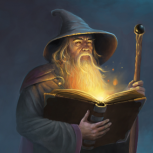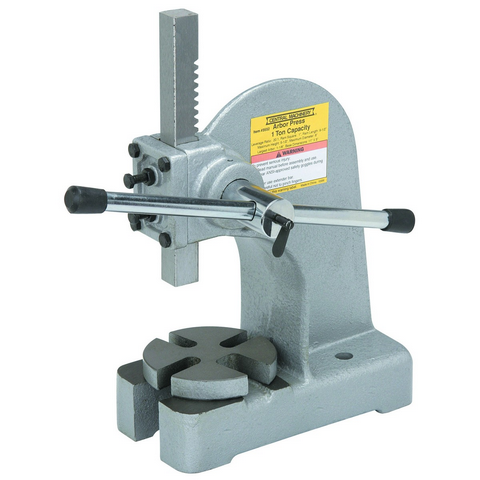-
Posts
555 -
Joined
-
Last visited
Content Type
Profiles
Forums
Events
Blogs
Gallery
Everything posted by wizard of tragacanth
-
If you are just doing small stamps like the one that you are showing, it may be safer (more controllable) and easier to use an arbor press for that. https://www.harborfreight.com/1-ton-arbor-press-3552.html nick
-

Inlaid Beaded Belt
wizard of tragacanth replied to kbarker's topic in Purses, Wallets, Belts and Miscellaneous Pocket Items
Looks interesting but it is difficult for me to see very well. Maybe you could post a larger image. I think maybe 600x800 would be good. I think. nick- 1 reply
-
- beaded belt
- inlaid
-
(and 2 more)
Tagged with:
-
What is it that you did not like about horse hide, if I may ask? nick
-
Just brain storming here but you could inset some neoprene panels for contact patches directly under your sit bone. Make a pleasing shape, like a couple of tear drops that follow the contour of the seat. Back up the neoprene with leather of course, to keep it dimensionally stable. I saw rolls and panels of neoprene on Amazon. It come in 1/8" and 1/4" thick. Just search Amazon for neoprene. nick
-
Never done this myself but I agree with Rockoboy. I would not sand it at all, that would really mess it up. Start with de-glazing and re-dying. Re-dye using Fiebing's Pro dye. Buff it well and I think that most of your scratches will seem to disappear. I would not try to soften the leather at all. These are not sling seats. The firmness is for support as it would be for a wooden chair but just in a leather surface. For a finish, I would use an Automotive Leather Seat Conditioner. Unlike neatsfoot oil, that stuff is made to sit on and is not as likely to ruin your clothing. nick
-

Spraying dyes and sealers
wizard of tragacanth replied to PappysLeather's topic in How Do I Do That?
Wouldn't denatured alcohol be the best cleaner for an airbrush? I don't know, just asking. nick -

Customer doesn’t want a maker’s mark
wizard of tragacanth replied to Cleatherdesigns's topic in Leatherwork Conversation
There are definitely arguments on both sides of this issue. I have had some previous co-workers that were very disappointed when I forgot to put my stamp on, but these people knew me on a personal level. OCD people probably see a stamp as a blemish, especially generic stamps like mine. Beautiful stamps are probably much more welcome, such as JLS's stamp. If they are not OCD, then perhaps they are agents, possibly International and wear watches and clothing with no marks of origin. Whatever... it is a custom product and that means giving them what they want. nick -
Hey, wait a minute... aren't you the one that brought this up... accompanied by a pic of two 1911's ??? I'm confused... as usual. nick
-
Shower curtain... what a great idea! One may be able to find a shower curtain with an interesting design. It would be waterproof and the proper thickness as well. In the U.S. we call these Dopp kits. If you buy one at the store, it will be lined with vinyl. Mine is lined with solid yellow but you could be creative. nick
-
Great idea!
-
If you have the real gun, why not use the real gun? I do this frequently, especially if I am only making a one-off. However, you could make an unlimited number of holsters from the same gun, if you wanted to. It's not going to harm it. I just wrap the gun in a single layer of Saran wrap and wet mold by hand (or in a vacuum bag), NOT in a shop press. nick
-
Start with Tandy tools but avoid the cheap versions. For example, Tandy has two different rotary punches (I am not saying that you even want one of these right now, this is just an example). The $18 one is made of stamped steel. You might get enough work out of it for one project but the holes may be sloppy! The $50 Craftool Pro version is expensive but it is a good tool and worth the money You may be able to find the same heavy, metal version on Amazon for less. It is worth a look. A slot punch is another example. The $13 cheap shiny silver punch that looks like chrome, is a poor tool. The $40, Craftool Heavy Duty Oblong punch, would be the level that you would be looking for. You will need a cutting mat or board. Cheap kitchen, poly cutting boards will work for this, or a poundo board from Tandy. You need cutting tools. You can start with a an x-acto knife for small projects and a utility knife for big stuff. If you are stamping, you will need a granite (or similar) slab to back up your work. You need the appropriate sized needles and thread for the particular project. You need a way to mark your stitching holes and a way to make the holes. You will need some dye. I recommend Fiebing's Pro Dye. You need a finish coat. As an example, use Satin Shene for a low gloss or Resolene for a high gloss. That's just two out of many available finishes. The list goes on, but I am getting tired. Watch some YT videos on the types of projects that you want to make and pay attention to the tools that they use. Have fun! nick
-

Saddle Scabbard
wizard of tragacanth replied to Josh Ashman's topic in Saddle and Tack Accessory Items
Ohhhh, Buddy! -

Cargo pants bag
wizard of tragacanth replied to Frodo's topic in Purses, Wallets, Belts and Miscellaneous Pocket Items
Frodo... wow, what a wild idea! You think up some cool stuff. nick -

6th holster
wizard of tragacanth replied to GnewVFL's topic in Gun Holsters, Rifle Slings and Knife Sheathes
Oh, I really like this one! The contrasting red belt loop with your maker's mark is a great touch. Only the owner will see it but it really adds to the custom feel. nick -

5th holster
wizard of tragacanth replied to GnewVFL's topic in Gun Holsters, Rifle Slings and Knife Sheathes
Grant, that is some cool artwork there! nick -

Beginner needing advice purchased item's
wizard of tragacanth replied to SDP's topic in Getting Started
Important question -- What are you planning on making? Off-hand, I am guessing that you will want to return all of this stuff and start over. Well, I take that back. You will probably want the edge beveler and if you have a drill or something similar to mount the slicker on, keep that, I guess. Again, there is no definitive answer until we know what you are making. nick -

How do I recreate this type of leather?
wizard of tragacanth replied to LostInThought's topic in How Do I Do That?
Yeah, I would agree, that is my first thought anyway. Without seeing it in person, I am guessing it is two layers of relatively thin leather, with odd shaped scraps of leather glued in between and lightly wet molded. Then maybe it is tied in a knot and left to dry! nick -

How wuhdja know ?
wizard of tragacanth replied to JLSleather's topic in Gun Holsters, Rifle Slings and Knife Sheathes
Yeah, I always thought that the only variation in the models was in the finish and the grips, I mean, a P238 is a P238 as far as I know. They don't come in different calibers or anything. I cannot imagine where or why they would differ. https://www.sigsauer.com/products/firearms/pistols/p238/ nick -
That's a nice looking combo. The holster matches the gun. Love those Wiley Clapp editions! I agree with JLS that I would go with a heavier leather, like 8/9/10 oz leather for a gun of this size and weight. It appears the the back panel of leather impinges on one's ability to get a full firing grip on the handle. The front panel looks just fine, in that regard. I would suggest trimming out that little triangular piece that can be seen peeking out by the trigger guard, when the holster is viewed from the front. This may be of no importance to you and I am talking purely about aesthetics here, but it looks like the belt slots could be cleaned up a little. I can see a little bump in the transition between the punched holes and where the slot was cut out. Wrap some 150 grit sandpaper around a paint stir stick or similarly flat tool, and smooth those out, then dye and burnish the slots. Not necessary at all however. nick
-

Rifle scabbard
wizard of tragacanth replied to Madmax500000's topic in Gun Holsters, Rifle Slings and Knife Sheathes
Very nice work. Your customer is going to be very happy and proud of this case. nick



